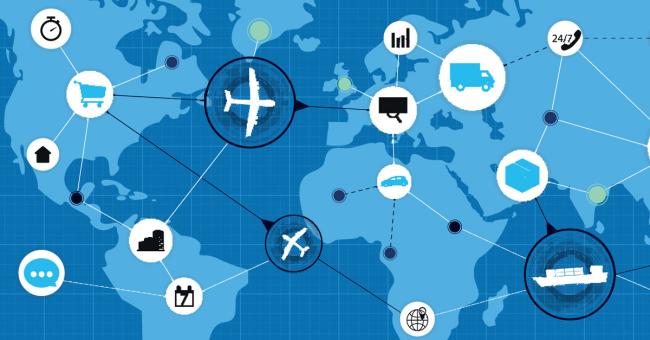A New Way to Assess Supply-Chain Disruptions

The Global Supply Chain Pressure Index
For the past few years, our newsfeeds have been full of stories about the pandemic rocking the global supply chain, disrupting labor, slowing transportation and inflating costs (in February 2022, inflation was the highest it’s been in 40 years). Meanwhile, the readers of these stories, consumers and companies alike, are wondering when the economy will return to some version of normal.
Luckily, a reprieve may be just around the corner. According to the Global Supply Chain Pressure Index (GSCPI), a new tool created by the Federal Reserve Bank of New York, pressure on the global supply chain may soon moderate.
Researchers Gianluca Benigno, Julian di Giovanni, Jan Groen and Adam Noble unveiled the index in a blog post, explaining how they developed the model and revealing the insight they have gleaned from it on the trajectory of the economy. The model uses data from several metrics to measure global supply chain pressures. Using regression, the authors attempted to remove demand factors from the index so that it shows only the impact of supply-side disruptions on the economy.
The goal, they wrote, “was to construct a parsimonious measure of global supply chain pressures that could be used to gauge the importance of supply constraints with respect to economic outcomes.”
The GSCPI uses data on the cost of shipping raw materials from the Baltic Dry Index (BDI), container shipping rates from Harpex Index, and cost of air freight from the U.S. Bureau of Labor Statistics (BLS), three commonly referenced indices. It also uses country-level manufacturing data from the Purchase Manager Index (PMI). These metrics include “delivery time” (delays impacting producers). “backlogs” (orders received by companies that are still unfulfilled) and “purchased stocks” (the extent of firms’ excess inventory).
The graph shows that the pandemic outdoes any event to disrupt the supply chain since 1997. The authors point to four key events that previously provoked major shifts in the model: the Great Financial Crisis of 2008, the 2011 Tōhoku earthquake and resulting tsunami in Japan, flooding in Thailand in 2011 and the China-U.S. trade disputes of 2017–18. These events correlate with spikes and dips of about 2 standard deviations from the average. This year, the spike is more than twice that, reaching about 4.5 standard deviations above the average.
“The spikes in the GSCPI associated with the aforementioned events pale in comparison to what has been observed since the COVID-19 pandemic began,” the authors wrote.
Yet, the index shows that this could be the peak.
Though the GSCPI cannot tell us whether supply chain challenges like bottlenecks and backlogs will go away any time soon, it does suggest that the problems may ease in 2022. Thanks to a slowdown in the spread of the Omicron variant in some parts of the globe and to increased investment in new technologies to streamline production, companies are adapting aspects of their supply chain. The data suggests that a new normal may be in sight.
Looking for ways to improve your supply chain? It starts with complete visibility, from the shop floor to the showroom. Produced with Sourcing Journal, our Visibility Report offers actionable insight and tips on using production management software to digitize and improve visibility across your supply chain. Get your copy today!

